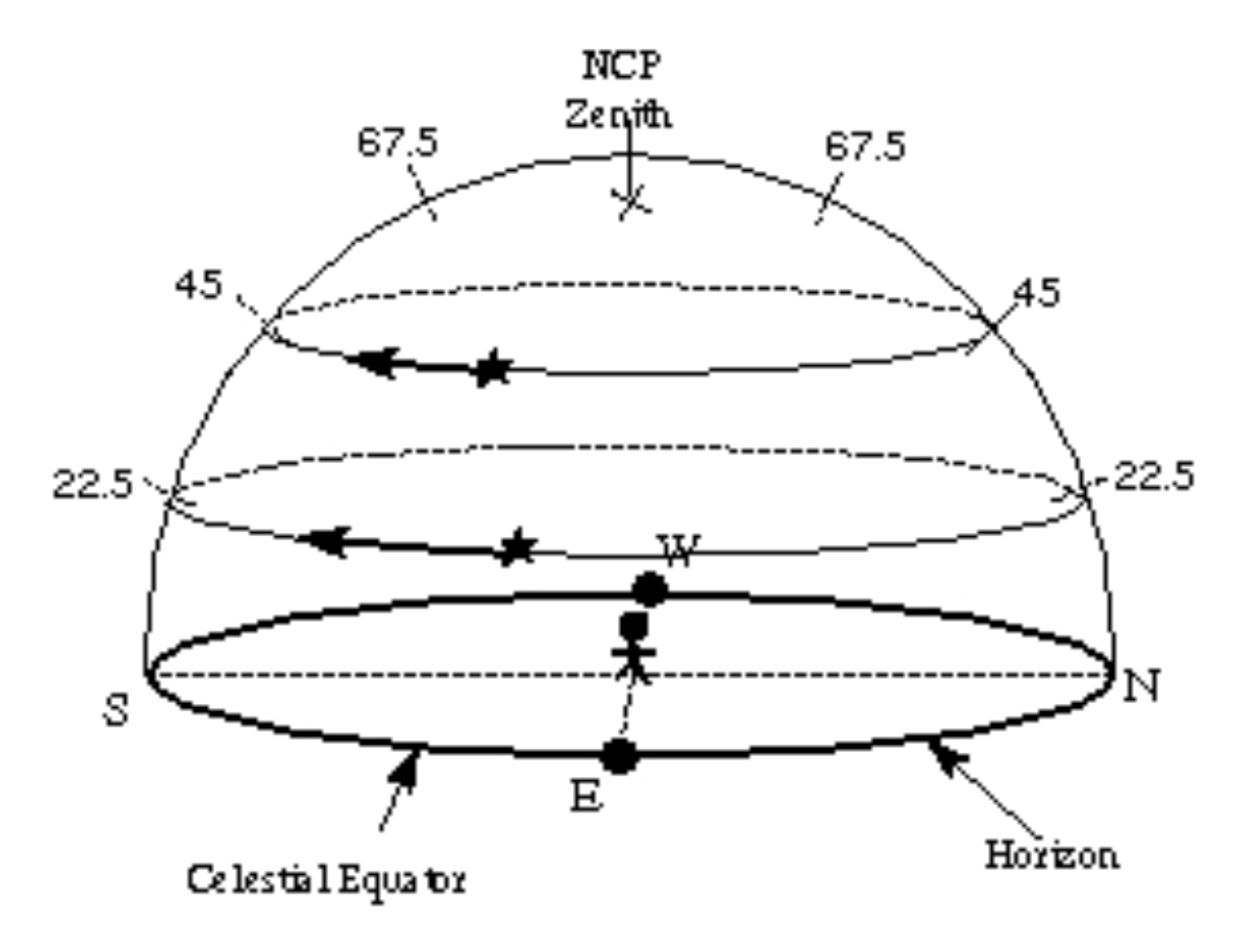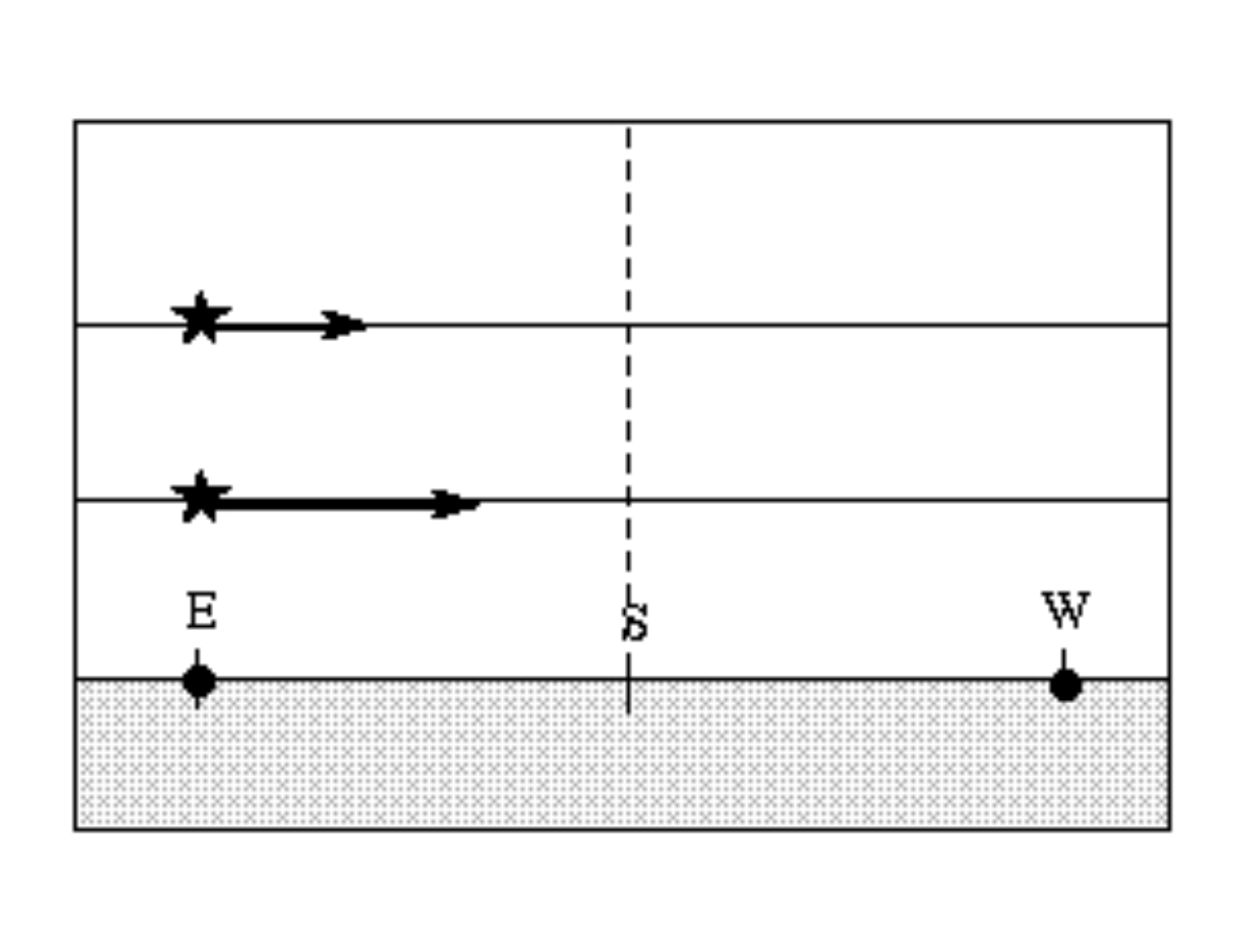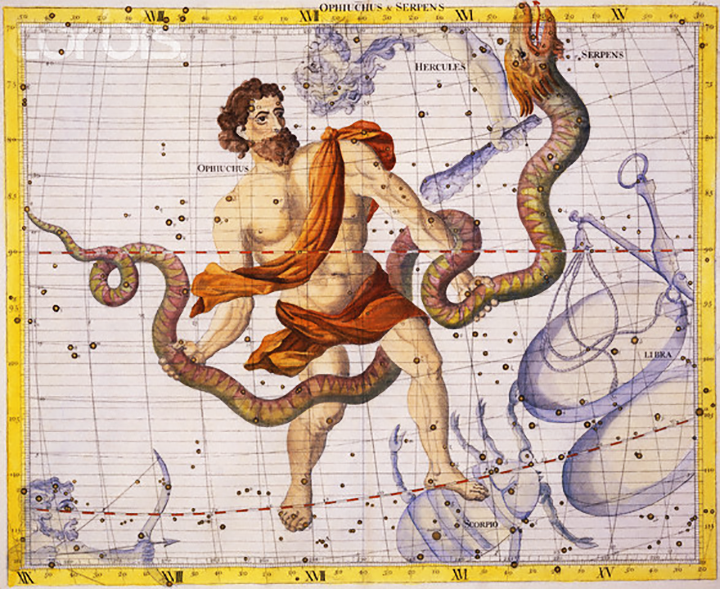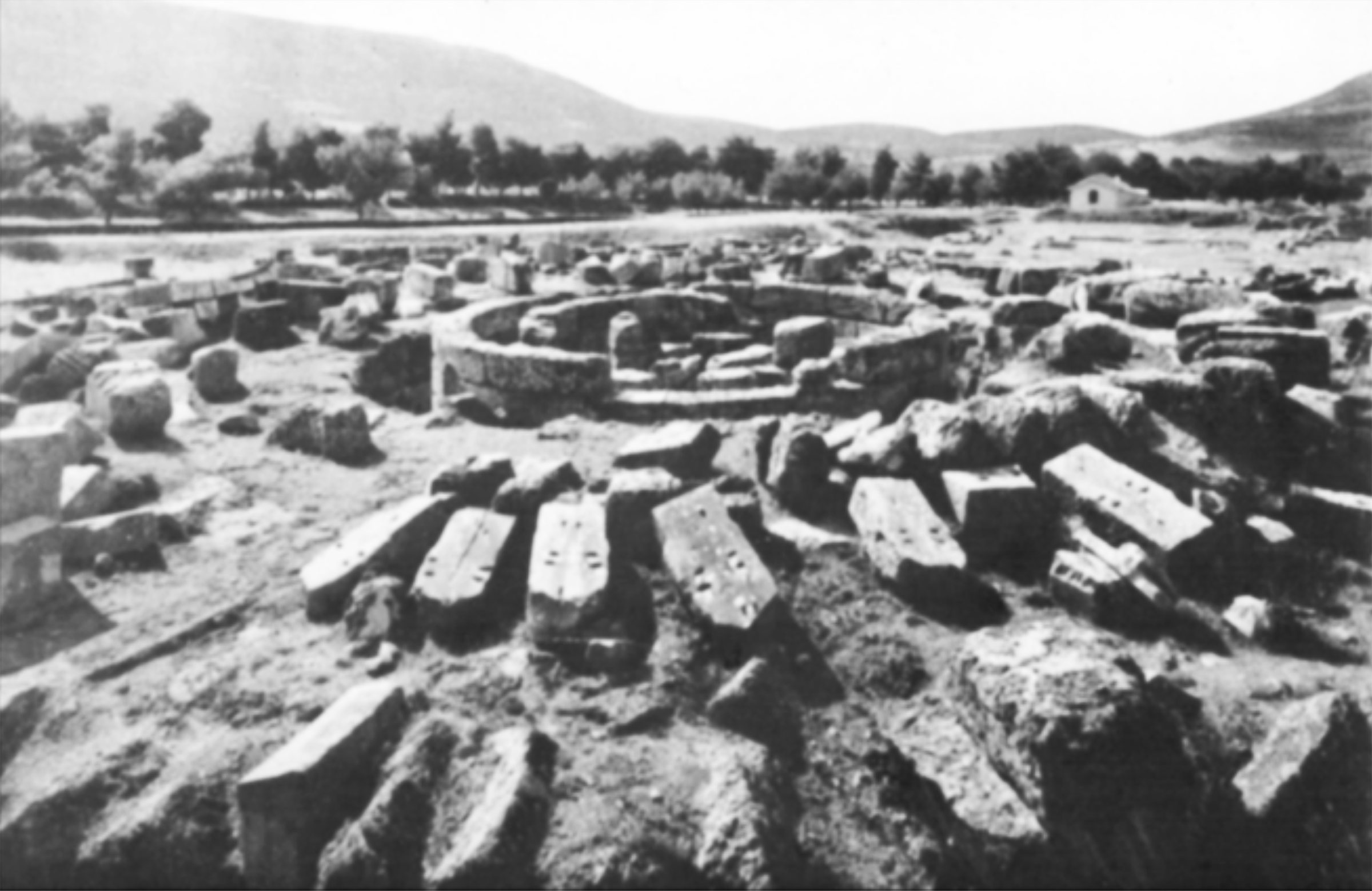The Ophiucus Question
Is there a 13th sign in the zodiac: the Ophiucus question
The sky is vast and the stars are numberless. The first skywatchers were meaning makers, like we modern people, and they had the same task we do today: how to make sense of so much time and space.
The visible night sky is full of stars above and around us (and below us, too, over the part of the world we cannot see from where we're standing). The visible night sky is constant: the stars are called the fixed stars because of their utter reliability, rising and setting at the same time in the same place over a long period of time, moving only slightly every 2,000+ years.
Every skywatching culture -- the Babylonians, the Arabs, the Chinese, the Indians east and west, the Mayans -- named these stars and made patterns out of them (constellations in the west; xiu in China): to tell time, to sail, to worship, to plant and reap. The visible sky can be divided roughly into three sections (see illustration of three “paths” of heaven):
a) the "dome" of the sky: these are the stars directly overhead, which we will be able to see year round over us.
b) the zodiac (or plane of the ecliptic: the apparent path of the Sun and all the planets through a band of stars) which we can also see year around. Different parts of the stars of the zodiac appear higher and lower on the visible horizon through the seasons.
c) the heliacal rising and setting stars: these are stars we will see only part of the year, because of the tilt of the earth towards the Sun, through the seasons.
("Stars motion at NP. Stars rotate parallel to the Celestial Equator, so they move parallel to the horizon here - they never set! Altitudes of 1/4, 1/2, and 3/4 of the way to zenith are marked." "View from the NP. Stars move parallel to the horizon. The Celestial Equator is on the horizon.")
We have inherited the constellation names and the star names in all three parts of the visible sky (and the invisible, or southern hemisphere sky, too) from the early watchers.
The zodiac: the zodiac is a band of stars through which the planets of our solar system travel. (The Babylonians knew the planets moved and the stars did not: they called the planets "bibbu", or sheep, because the planets "wandered" in the stable "field" of the stars). You can think of it as a wheel in the sky with yourself in the center where you are standing.Since it is a wheel, it's a 360º circle. This wheel is divided equally into 12 pie-shaped segments of 30º each, called the zodiac signs. Each sign has a symbol associated with the pattern of stars -- Aries, Taurus, Gemini, etc. Each set of stars and the symbol/sign are associated with a season of light. The Sun makes one complete journey of the wheel every 365 days; the Moon makes one complete journey of the wheel every 30+ days.
The constellation Ophiucus, the "13th sign"(see constellation Ophiucus) sits partly above the zodiac, but mostly in the "dome." You can see from the picture that the stars of the foot come down right in the middle of the zodiac constellation Scorpio.
Ordering The Universe: The Possibilities
Changing the system? New information gives us new possibilities. However, the stars of our galaxy, and their names, their position in the sky, and the movement of our solar system through them, are not new information. Copernicus lifted our thinking out of our habit: he saw that the Earth was not the center of the universe, that the Sun was the center of A universe, and Earth was only a part of this universe. This shifted our thinking. Astronomers are discovering new "planets" and asteroids in our system. The Hubble telescope shows us there are millions of universes, and they contain systems beyond our sight.
Periodically, and often, there's a push from interesting places (NASA?!) to add a new sign to the zodiac wheel, and it is almost always Ophiucus, never another constellation (perhaps, as you can see from the illustration, because the foot of the image is planted in the zodiac). One website says the Babylonians were "too lazy" to correctly interpret the wheel and fudged the calendars to fit with the system. But the Babylonians, like all cultures, ordered their lives with the movements of the Sun and the Moon and their steady path through the constellations, creating hours, days, months, and years, intercalating (adjusting) the calendar (Leap Year, for example) to account for "leftovers."
Why Ophiucus?
The giant figure wrestling with a snake is an image of the ancient Greek healer, Asklepios. Greek myths tell us Asklepios was the student of Chiron, adopted son of Apollo, teacher to Jason, Hercules, and importantly the teacher of Hippocrates, the west's first physician, to whom all doctors give their oath. In these myths, and in the archeological records, the Greek islands of Kos and Epidauros were healing centers. These centers included clinics, dormitories, theaters, and a structure called a tholos which was a below ground labyrinth holding snakes (see illustration). Patients came to these centers – to Asklepios and his daughters Panacea and Hygeia – where they were cured with bandages, herbs, and dreams. It's speculated that the snakes, worshipped for their connection to knowledge through their bodies' close relationship to the ground, were offered honey and mead with the hope they would channel a dream from the gods to illuminate the nature of the illness to the patient and doctor alike. These snakes are shown innumerably in Greek and Latin culture as winding around the chair of Asklepios, around his staff (the cadeuceus of modern medicine), and literally winding around the body of Hygeia.
In the sky above Ophiucus is the constellation Hercules. Hercules was one of Chiron's many heroic students. Below Ophiucus is the constellation Centaurus, also known as Chiron, who was the healer and teacher of Hercules and Ophiucus/Asklepios. The entire healing myth is all aligned in this one part of the sky. Perhaps in these times of difficulty, trauma, and illness, we long to be healed by something bigger than ourselves.
Perhaps, in our hopes and dreams, we want to displace the zodiac and change the order of things to include healing. But: since the Sun and Moon continue to move through the same path in the same rhythm of spring equinox, summer solstice, fall equinox and winter solstice with complete predictability and regularity, the zodiac signs as they exist adequately symbolize nature on Earth and the rhythms of growth.
Attributions for 13th Sign Blog Post
Star motion at north pole:
http://www.astronomynotes.com/nakedeye/s4.htm
Tholos at Epidauros:
Kerenyi, Carl. Asklepios: Archetypal Image of the Physician's Existence.
Trans. Ralph Manheim. New York: Bollingen Foundation, 1952, Print.
Image of Ophiucus
In Uranometria – public domain



